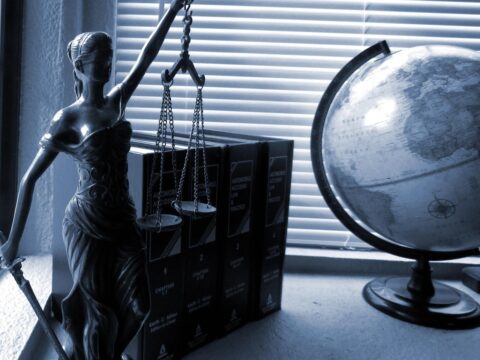Analysis of doctrines: ‘Sweat of the brow’ & ‘Modicum of creativity’ vis-a-vis Originality in Copyright Law
By Shuchi Mehta
Originality is the basic yardstick used by the copyright regimes in the world to evaluate the availability copyright protection to a particular work. The threshold of originality varies from jurisdictions. Section 13(1) of the Indian Copyright Act 1957[1] states that copyright subsists in “original literary, dramatic, musical and artistic works.” However, the Act fails to give any definition or test to determine originality of a work. This leaves the court with the duty to decide the amount originality required for a work to claim copyright protection.
The copyright law does not mean to apply the word ‘originality’ in its literal sense. In case of any art, or any fruit of human creativity, inevitably there must be some influence from the works of the predecessors. Copyright law only requires existence of some creative efforts by the creator. .
However, the degree of creativity expected to make a work original is still a grey area. There is no clarity as to when will the work be considered as original in the eyes of law. Especially in case of derivative works, it is very unclear as to when a derivative work can be identified as a separate work of art and claim legal protection of copyright.
Since there is no definite, single and unified concept of originality, there exist different doctrines used in different jurisdictions of law, which are analysed and compared in the following paragraphs.
SWEAT OF BROW DOCTRINE
According to this doctrine, an author gains rights through simple diligence during the creation of a work. Substantial creativity or “originality” is not required. The creator is entitled to such rights on account of efforts and expense put in by him in the creation of such a work. For Example, the creator of a telephone directory or a database must have a copyright over the product not because such a compilation of data showcases any creativity, or the author has expressed anything original, but merely because of the effort, time and money invested by the creator to collect and organise all the data in a specific manner. But such a compilation must be the work of the author himself and must not be copied from another source.[2]
MODICUM OF CREATIVITY DOCTRINE
The concept of “originality” has undergone a paradigm shift from the “sweat of the brow” doctrine to the “modicum of creativity” standard put forth in Feist Publication Inc. v. Rural Telephone Service[3] by the United States Supreme Court. The doctrine of “sweat of the brow” provides copyright protection on basis of the labour, skill and investment of capital put in by the creator instead of the originality. InFeist’s case[4], the US Supreme Court totally negated this doctrine and held that in order to be original a work must not only have been the product of independent creation, but it must also exhibit a “modicum of creativity”. The Supreme Court prompted ‘creative originality’ and laid down the new test to protect the creation on basis of the minimal creativity. This doctrine stipulates that originality subsists in a work where a sufficient amount of intellectual creativity and judgment has gone into the creation of that work. The standard of creativity need not be high but a minimum level of creativity should be there for copyright protection.
Now, let’s understand the position in different countries with respect to doctrines adopted by the courts in deciding originality of the work.
POSITION IN ENGLISH LAW (UK)
University of London Press v. University Tutorial Press[5] is a very important case where the test of “originality” was explained by the Chancery Division of England which is also commonly cited as an archetypal “sweat of the brow”. The Facts of the case follows-
A resolution by the University of London stated that the copyright of all the examination papers set by the examiners employed by the University vested with the University. Examiners were appointed for the purpose of setting the examination papers for matriculation examinations. They were free, subject to a syllabus and having regard to the knowledge expected from students, to choose their own questions. The University entered into an agreement with the University of London Press Limited to assign the copyright and all rights to publish the matriculation examination papers to the later for a consideration. Later, the University Tutorial Press Limited issued a publication which included sixteen out of forty-two matriculation papers. The papers were not copied from the publication of the University of London Press Limited, but were taken from copies of the examination papers supplied by students. In addition to the question papers, the publication also contained answers to the questions in some of the papers and also made some criticism on the way the papers were set. The plaintiff, University of London Press, sued University Tutorial Press for infringement of copyright.
The plaintiff contended that the term “literary work” as used in the Act has a very broad meaning covering work which are expressed in print or writing, irrespective of whether the quality or style is high and includes maps, charts, plans, tables, and compilations. Therefore the examination papers will also fall under the category of “literary work”. The defendant contended that questions were of common type and were not unique or distinct enough to claim copyright.
The Court held that the Copyright Act does not require that expression be in an original or novel form. It does, however, require that the work not be copied from another work. It must originate from the author. The question papers are original within the meaning of copyright laws as they were originated from the authors . The court held that merely because similar questions have been asked by other examiners, the plaintiff shall not be denied copyright.
This doctrine “sweat of the brow” was used in Walter v. Lane[6] and later in the case of Ladbroke (Football) Ltd. v. William Hill (Football) Ltd[7] where the Court said that it is immaterial whether work is wise or foolish, accurate or inaccurate, or whether it has or does not any literary merit. The case reiterated the requirement of ‘labour, skill and judgement’ and the requirement of originality is limited to the extent that the work originated from the author.[8] This doctrine is also followed in various other jurisdictions including Canada, Australia and India.
POSITION IN THE UNITED STATES OF AMERICA
USA has the oldest and the most developed Copyright laws in the world. The courts have given importance to both the creative and subjective contribution of the authors since the late 17th century.[9] It also gives emphasis to literary and artistic merits of the work.[10]
In the case of Bleistein v. Donaldson Lithographing Co.[11] decided in 1903, the United States Supreme Court revisited the questions of originality with respect to copyright and rejected the notion that originality should be decided with reference to the artistic merits of the work. The court did not consider the novelty or creativity of the work, but rather the presence or absence of the putative artist’s personal expression. If the item exhibits a “distinguishable variation” from another work, the law presumes that such a variation bears the imprint of the author’s person, thereby entitling the work to copyright protection.[12]This Bleistein test was later applied in various other cases especially the ones relating to copyright of fine arts.[13]
Feist Publications[14] is alandmark judgment in which the US Supreme Court insisted for a minimum amount of creativity as a prerequisite to claim copyright protections. The facts of the case are as follows. Rural Telephone Service Company was public utility providing telephone services. Under some local regulation, all telephone companies had to issue annually an updated telephone directory. Rural Telephone Service published a telephone directory using this data. Feist Publications Inc. was a publishing company specialized in area-wide telephone directories. Feist’s directories covered a wide range of geographical area covering 11 different telephone service areas. Both the companies distribute the directories free of cost to its subscribers and earn revenue on the advertisements in yellow pages. Both competed vigorously for yellow pages advertising. Feist not being a telephone company, lacked independent access to any subscriber information. To obtain the listings for its directory, Feist approached each of the 11 telephone companies operating in the area and offered to pay for the right to use its white pages listings. Rural refused to license its listings to Feist. Thus Feist used Rural’s listings without their consent. Feist then hired personnel to investigate and verify the data. Therefore Feist’s listing had more information that Rural’s. But some of these listings were identical to that of Rural. Rural telephone Service sued Feist Publications for copyright infringement.
The major question of law was whether a compilation like that of a telephone directory is protected under the Copyright law. The court held that the facts like names, addresses etc are not copyrightable, but compilations of facts are copyrightable. This is majorly owing to the unique way of expression by way of arrangement and if it possesses at least some minimal degree of creativity, it will be copyrightable. The Court held that Rural’s directory displayed a lack of requisite standards for copyright protection as it was just a compilation of data without any minimum creativity, which was a requirement for copyright protection. Hence, Rural’s case was dismissed.. In Key Publications, Inc. v. Chinatown Today Publishing Enterprises Inc[15], the US Supreme Court defined creativity negatively by describing how a compiler’s work might fail to satisfy the requirement; selections and arrangements that are mechanical, routine, common place, typical, garden variety, obvious, inevitable, time-honoured, age-old, or dictated by law will fail to pass muster[16] However, the opinion does not make clear whether originality is to be found by looking at the work or by evaluating the mental processes that went into producing it.
In this case, the US Supreme Court laid down three requirements for a compilation to qualify for copyright protection:
- The collection and assembly of pre-existing data;
- Selection, coordination or arrangement of the data; and
- The resulting work that comes into being is original, by virtue of the selection, coordination or arrangement of the data contained in the work.
POSITION IN INDIA
India strongly followed the doctrine of ‘sweat of the brow’ for a considerably long time. The Supreme Court of India, following the approach of English Courts, observed that copyright law does not prevent a person from taking what is useful from an original work with additions and improvements.[17] The Court has held neither original thought nor original research are necessary for claiming copyright and even compilations such as dictionaries, gazettes, maps, arithmetic, almanacs, encyclopaedias etc. are capable of having copyright.[18] In the case of Burlington Home Shopping v Rajnish Chibber[19], were the facts were similar to that of Feist’s case [20], the court following the doctrine held that a compilation is copyrightable.
However, the standard of ‘originality’ followed in India is not as low as the standard followed in England. The Bombay High Court in its judgement regarding copyright of a news article stated that there is no copyright for happenings and events which could be news stories and a reporter cannot claim any copyright over such events because he/she reported it first.[21]The ideas, information, natural phenomena and events on which an author spends his/her skill, labour, capital, judgment and literary talents are common property and are not the subject of copyright. Hence, there is no copyright in news or information per se. However, copyright may be obtained for the form in which these are expressed because of the skill and labour that goes into the writing of stories or features and in the selection and arrangement of the material.[22]
The most important Indian Case on this subject is Eastern Book Company v. D.B. Modak[23], where the Supreme Court discarded the ‘Sweat of the Brow’ doctrine and shifted to a ‘Modicum of creativity’approach as followed in the US. The dispute is relating to copyrightability of judgements. The facts of the case is that SCC, the Supreme Court Case reporter, was aggrieved by other parties infringing their copyright and launching software containing the judgements edited by SCC along with other additions made by the editors of SCC like cross references, head notes, the short notes comprising of lead words and the long note which comprises of a brief description of the facts and relevant extract from the judgments of the court and standardisation and formatting of text, etc. The notion of “flavour of minimum requirement of creativity” was introduced in this case. It was held that to establish copyright, the creativity standard applied is not that something must be novel or non-obvious, but some amount of creativity in the work to claim a copyright is required. The Court held that these inputs made by the editors of SCC can be given copyright protection because such tasks require the use of legal knowledge, skill and judgement of the editor. Thus, this exercise and creation thereof has a flavour of minimum amount of creativity and enjoy the copyright protection.
Accordingly, the Court granted copyright protection to the additions and contributions made by the editors of SCC. At the same the Court also held that the orders and judgments of the Courts are in public domain and everybody has a right to use and publish them and therefore no copyright can be claimed on the same.
In subsequent cases, the Indian courts followed this approach and completely rejected the plea to protect mere works of compilation under copyright.[24] Copyright is conferred on those works which has originated from author and which is not merely a copy of the original work. This does not push the standard of originality expected to a considerably high level, but brings in a subtle balance between ensuring reward for the efforts of an author while also maintaining a reasonable standard in the materials protected under law.
CONCLUSION
The primary objective of copyright is not to reward the labour of authors but rather to protect expression while encouraging others to build freely upon the ideas and information conveyed in the expression. But the standard of originality cannot be placed at a high threshold since majority of the work would fall out of the preview of copyright, at the same time it should not be so low that the degree of protection of work conferred by law degrades to a position where any derivative work with just trivial modifications from that of the original work will be brought under the purview of protection.
This balance is very crucial and is to some extend achieved by the US jurisprudence, which follows the criterion of ‘Modicum of Creativity’ which has a slightly higher expectation of originality from the authors as compare to the jurisprudence in UK, which follows the doctrine of ‘Sweat of the Brow’.
The jurisprudence relating to ‘Originality’ of copyright in India is developing in the right direction. Since the Modak Case[25], we have deviated from the UK jurisprudence and are coining our own checks and balances so that the literature and other works, with a degree of originality,are properly brought under copyright protection while denying such protection to mere compilation without any degree of creativity from such privileges.
[1] Sec 13(1), Indian Copyright Act, 1957- Works in which copyright subsists.- Subject to the provisions of this section and the other provisions of this Act, copyright shall subsist throughout India in the following classes of works, that is to say –
(a) original literary, dramatic, musical and artistic works;
(b) cinematograph films; and
(c) sound recordings;
[2] Hailshree Saksena, DOCTRINE OF “SWEAT OF THE BROW” http://papers.ssrn.com/sol3/papers.cfm?abstract_id=1398303)
[3] 499 U.S. 340, 342 (1991)
[4] Id.
[5] England, Chancery Division. [1916] 2 Ch. 601
[6] [1900] AC 539
[7] [1964] 1 WLR 273
[8] Alex Lyon, A European Invasion: The effect of Infopaq on the ‘labour, skill and judgement’ criterion of originality within UK copyright law (available at http://www.sjol.co.uk/issue-6/a-european-invasion-the-effect-of-infopaq-on-the-labour-skill-and-judgement-criterion-of-originality-within-uk-copyright-law)
[9] Abraham Drassinower, Sweat of the Brow, Creativity, and Authorship:On Originality in Canadian Copyright Law. http://www.uoltj.ca/articles/vol1.1-2/2003-2004.1.1-2.uoltj.Drassinower.105-123.pdf
[10] Burrow-Giles Lithographic Co. v. Sarony, 111 U.S. 53 (1884)
[11]188 U.S. 239
[12] Supra Note 1
[13] Alfred Bell & Co. v. Catalda Fine Arts, Inc.,191 F.2d 99 (2d Cir. 1951)
[14] Supra Note 3
[15] 945 F.2d 509, 511 (2d Cir. 1991)
[16] 945 F.2d 509, 511 (2d Cir. 1991)
[17] Kartar Singh Giani v. Ladha Singh, Air 1934 Lahore 777.
[18] Mishra Bandhu v. Shivratan,AIR 1970 MP 261
[19] 1995 PTC (15) 278
[20] Feist Publications v. Rural Telephone Service, 499 U.S. 340, 342 (1991)
[21] Indian Express Newspaper (Bombay) Pvt Ltd v Jagmohan, ( AIR 1985 Bom 229); RG Anand v Delux Films and Others, (AIR 1978 SC 1614)
[22] Indian Express Newspaper (Bombay) Pvt Ltd v Jagmohan, ( AIR 1985 Bom 229)
[23] 2002 PTC 641
[24] Dr.Reckeweg and Co. Gmbh. and Anr.Vs.Adven Biotech Pvt. Ltd, MANU/DE/0961/2008
[25] Eastern Book Company v. D.B. Modak, 2002 PTC 641
By entering the email address you agree to our Privacy Policy.



